Plant-Derived Monoterpene Therapies in Parkinson's Disease Models: Systematic Review and Meta-Analysis
- PMID: 40219067
- PMCID: PMC11990262
- DOI: 10.3390/plants14070999
Plant-Derived Monoterpene Therapies in Parkinson's Disease Models: Systematic Review and Meta-Analysis
Abstract
Monoterpenes (MTs) are plants' secondary metabolites and major components of essential oils (EOs), widely used in the pharmaceutical industry. However, its neuroprotective effects, particularly in Parkinson's disease (PD) have not been fully demonstrated. PD is a progressive neurological disorder marked by dopaminergic neuron loss in the substantia nigra, motor symptoms being the most reported ones. This review evaluates the evidence supporting the use of MTs as potential neuroprotective agents. PubMed, SCOPUS, Google Scholar, and ScienceDirect databases were searched for articles on MTs in murine models with any type of administration. The PRISMA guidelines were followed. After screening 405 records, 32 were included in the systematic review and 30 were included in the meta-analysis. Fifteen MTs, commonly found in EOs, were identified as potential therapeutic agents for PD. The meta-analysis revealed that MTs administration improved motor performance, increased tyrosine hydroxylase levels, reduced oxidative stress markers (malondialdehyde) and proinflammatory cytokines (IL-6, IL-1, TNF-α), and enhanced antioxidant enzymes (catalase, superoxide dismutase) in parkinsonian animals. The antioxidant and anti-inflammatory properties of MTs appear to be key mechanisms in mitigating dopaminergic neurodegeneration. However, further clinical research is essential to translate these findings into practical applications.
Keywords: Parkinson’s animal model; behavioral tests; monoterpenes; neuroinflammation; oxidative stress.
Conflict of interest statement
The authors declare no conflicts of interest.
Figures
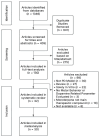

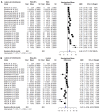

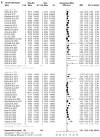


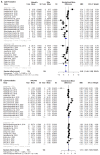
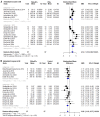
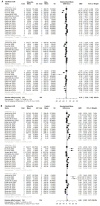
Similar articles
-
Paracentrotus lividus sea urchin gonadal extract mitigates neurotoxicity and inflammatory signaling in a rat model of Parkinson's disease.PLoS One. 2024 Dec 18;19(12):e0315858. doi: 10.1371/journal.pone.0315858. eCollection 2024. PLoS One. 2024. PMID: 39693313 Free PMC article.
-
Neuroprotective Effects of Thymol, a Dietary Monoterpene Against Dopaminergic Neurodegeneration in Rotenone-Induced Rat Model of Parkinson's Disease.Int J Mol Sci. 2019 Mar 27;20(7):1538. doi: 10.3390/ijms20071538. Int J Mol Sci. 2019. PMID: 30934738 Free PMC article.
-
α-Bisabolol, a Dietary Bioactive Phytochemical Attenuates Dopaminergic Neurodegeneration through Modulation of Oxidative Stress, Neuroinflammation and Apoptosis in Rotenone-Induced Rat Model of Parkinson's disease.Biomolecules. 2020 Oct 8;10(10):1421. doi: 10.3390/biom10101421. Biomolecules. 2020. PMID: 33049992 Free PMC article.
-
Therapeutic potentials of plant iridoids in Alzheimer's and Parkinson's diseases: A review.Eur J Med Chem. 2019 May 1;169:185-199. doi: 10.1016/j.ejmech.2019.03.009. Epub 2019 Mar 8. Eur J Med Chem. 2019. PMID: 30877973 Review.
-
The intranasal administration of 1-methyl-4-phenyl-1,2,3,6-tetrahydropyridine (MPTP): a new rodent model to test palliative and neuroprotective agents for Parkinson's disease.Curr Pharm Des. 2011;17(5):489-507. doi: 10.2174/138161211795164095. Curr Pharm Des. 2011. PMID: 21375482 Review.
References
-
- Breitmaier E. Terpenes: Flavors, Fragrances, Pharmaca, Pheromones. 1st ed. Wiley; Hoboken, NJ, USA: 2006.
-
- Milawati H., Harneti D., Maharani R., Nurlelasari N., Hidayat A.T., Azmi M.N., Shiono Y., Supratman U. Caryophyllene-Type Sesquiterpenoids from the Stembark of Aglalia Harmsiana and Their Cytotoxic Activity against MCF-7 Breast Cancer Cells. Molekul. 2019;14:126–132.
Publication types
Grants and funding
- CONICET-PIP 2021-2023, 11220200103136CO/Consejo Nacional de Investigaciones Científicas y Técnicas
- ANPCyT, PICT- D-2018-02446/Agencia Nacional de Promoción de la Investigación, el Desarrollo Tecnológico y la Innovación
- Fondo para Reparación y Actualización de Equipamiento Científico - 80 años Fundación Williams/Fundación Williams
- PIDTA 2023/Universidad Nacional de Córdoba
LinkOut - more resources
Full Text Sources

